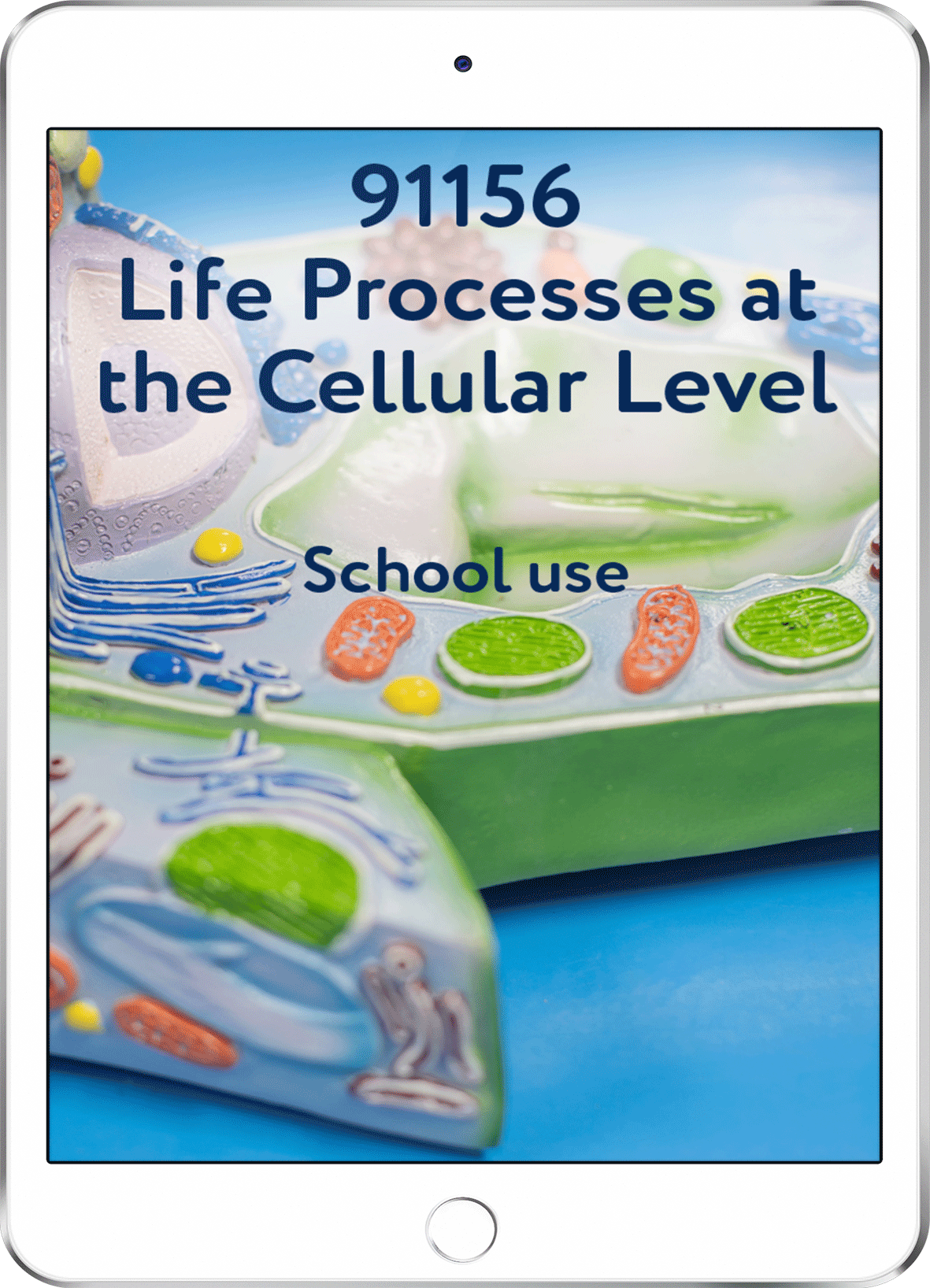91156 Life Processes at the Cellular Level - School Use
91156 Life Processes at the Cellular Level - School Use
LearnWell Digital
This version of the resource is for school use. Teachers can facilitate, and load students from their class. If you are not using this resource in class, you should purchase the home use version.
Couldn't load pickup availability
This resources covers the things you need to know and be able to do for the NCEA Level 2 Achievement Standard 91156 (Biology 2.4) Demonstrate understanding of life processes at a cellular level.
What you'll learn
In this resource you’ll learn about:
1. Cell structure and function
You’ll first explore the structure and function of the different parts of plant and animal cells, and learn what affects them. Understanding the similarities and differences between different types of cells will help you understand the ideas covered in the next four sections.
2. Movement of materials
In this section, you’ll extend your knowledge of the structure and function of the cell membrane. You’ll learn how materials such as oxygen, water and glucose move in and out of cells by passive and active transport. You’ll explore how the surface area to volume ratio of a cell is significant in determining its size, shape, and how materials move across its cell membrane.
3. Enzyme activity
Next, you’ll learn about the structure of enzymes and their role as biological catalysts. You’ll look at scientific models for how enzymes function and how these models explain the reactions each enzyme catalyses. You’ll also explore some of the many factors that affect enzyme activity, including temperature, pH, substrate concentration, cofactors and inhibitors.
4. Photosynthesis and respiration
You’ll build on what you already know about cell organelles, enzymes and the movement of materials to look at photosynthesis and respiration. You’ll learn how these two processes relate to the overall functioning of plant and animal cells and investigate some factors that affect how quickly they occur.
5. DNA replication and cell division
Finally, you’ll think about the entire life cycle of a cell, and focus on two specific stages of the cell cycle: DNA replication and mitosis. You’ll revise the structure of DNA and how it’s copied and learn why it needs to be copied before a cell divides into two by mitosis. To finish, you’ll explore some factors that affect how quickly mitosis occurs.
LearnWell Digital resources put the learner at the centre. Using almost any device, students can easily work at a pace that suits them through interactive, scaffolded learning and activities.
You can find out more on the information page about our LearnWell Digital resources.

